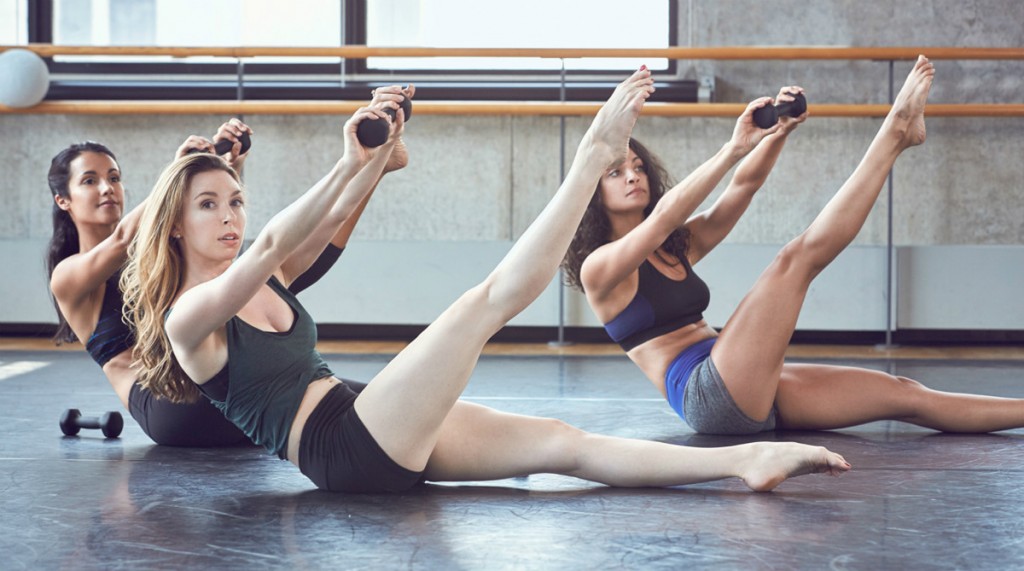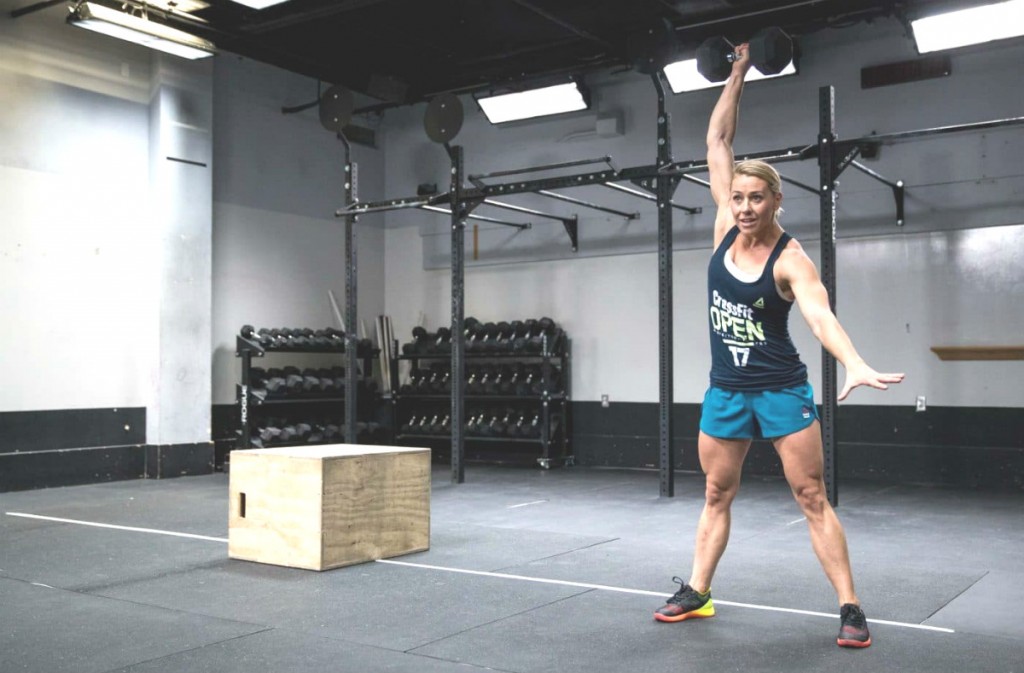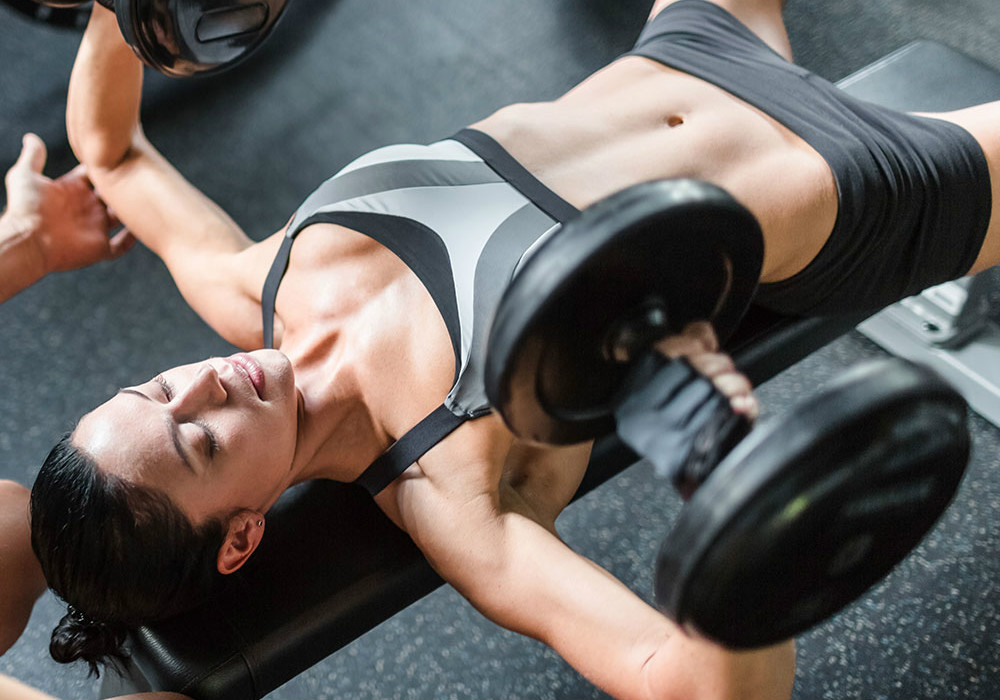The perfect weight of dumbbells you should start with as a beginner will depend on your modality, or in other words the type of training and its objective.
First let’s look at the modalities that user lighter weights that I don’t write about a whole lot on this site.
Table of Contents
Barre

I’ve sold many sets of aerobic dumbbells to client with barre studios, and I can tell you that they mostly buy sizes from 2lb to 5lb, and sometimes a little heavier, up to 8lb. These are women’s group training classes that combine elements of ballet, yoga and strength training.
These sizes of dumbbells are so inexpensive, usually priced per pound, that it’s worth getting a few sizes all at once just to make sure you have what you need.
Aerobics
Although women have gravitated towards other training modalities in the last decade or so, aerobic routines are still relevant.
You will want even lighter dumbbells than barre classes use, because you’ll be moving quicker. Get 2lb or 3lb dumbbells to start with. They’re easy to move around, but after several minutes you’ll feel the effects pretty well.
Crossfit WODs

Dumbbells aren’t one of the staples for WODs. Normally any one-handed exercises are done with kettlebells instead. But the shape of dumbbells is more handy for certain exercises.
For dumbbell WODs, you can kind of treat the dumbbell sizes like kettlebells in that you don’t need a big set of dumbbells in 5lb increments. Two or three sizes spaced 10 lbs apart will be fine.
Men’s workouts “as rx’d” use mostly 35lb, 50lb and 70lb dumbbells. As a beginner you can scale that down to a 25lb and 40lb pair.
Women’s workouts “as rx’d” use 25lb, 35lb and 45lb dumbbells. As a beginner you should scale that down to a 15lb, 25lb and 35lb pair.
I’m basing this off the list of dumbbell WODs on crossfit.com.
Rubber-coated dumbbells are the best for WODs, because of the way you will be dropping them on the floor (if you care about going fast!). Sometimes they’ll take a bad bounce and bang against other things. Rubber protects everything from damage and reduces noise.
Strength Training / Bodybuilding

Here’s where things get more complex. One or two weights of dumbbells won’t be enough for an effective full-body workout, whether your goal is to gain muscle or to increase strength.
Rep Range
The conventional wisdom is that gaining muscle is accomplished with sets of the most weight you can do for about 10 reps, while gaining strength (without increasing muscle mass much) is best done with heavier weight that you can only do for about 5 reps.
Realistically, most people using either rep range find that they make improvements for a while, slowly going up in weight, and then they get to a point where they stall out, finding themselves unable to lift more than a certain weight for several workouts in a row. One of the best ways to break through a plateau like this is to stimulate your body in a new way by temporarily switching to a different rep scheme (ie: lighter weight and more reps, or heavier weight and fewer reps).
Typically there’s about a 15-20% difference in weight that you use for 10 reps vs 5 reps. See the calculator here to get a rough estimate.
Sizes You Need for Different Exercises
You will need a large range of weights. Unless you can afford a whole set of fixed-weight dumbbells and a rack to put them on, and you have the space for it, your best would might be adjustable dumbbells that go from 5 to 25 lbs or from 5 to 50 lbs. Ironmaster has great adjustable dumbbells that come in versions as low as 4-45 lbs, and you can buy add-on kits for to expand them up to 120 lbs (!!) if you get strong enough.
A few weights of dumbbells won’t do the trick here. The weight is so critical with strength training. It’s all about linear progression, meaning you increase the weight in small increments each week. The weights you start at will depend on your current strength level and what exercises you do.
For example, a beginner woman doing dumbbell squats can use a pair of 25lb dumbbells and go up in weight from there, because squats utilize large muscles in a biomechanically advantageous way. On the other hand, she will need 5lb dumbbells (or smaller) for lateral raises, which is one of the hardest weight training exercises in terms of the force we can produce.
Plus, you need to start with at least one warm-up set with lighter weight for most exercises, usually around 50-70% of your “working” weight. A warm-up set gets the blood flowing in those muscles, prevents injury, and actually makes you stronger for your “work” sets than you would be without a warm-up set.
For heavier exercises like squats and bench presses, you should do 2 or more warm-up sets of increasing weight. Intermediate and advanced lifters might even do 4 or 5 warm-up sets.
Hopefully you get the picture. You need a lot of sizes of dumbbells to effectively do a strength training program.
Tips on Buying Dumbbells
My favorite adjustable dumbbells, as I mentioned above, are the Ironmaster. I did a comparison of them to a couple other popular models of adjustable dumbbells.
For fixed-weight (ie: non-adjustable) dumbbells, you’ll need to buy a bunch of them in 5lb increments, or even 2.5lb increments if you can. With two-handed exercises, going up 5lb each hand means a 10lb increase, which is a big jump when you’re struggling.
The ritziest option is urethane coated dumbbells. You’ll see these in nice commercial gyms. Urethane lasts forever without degrading.
The cheapest option for fixed-weight dumbbells is cast iron hex dumbbells.

